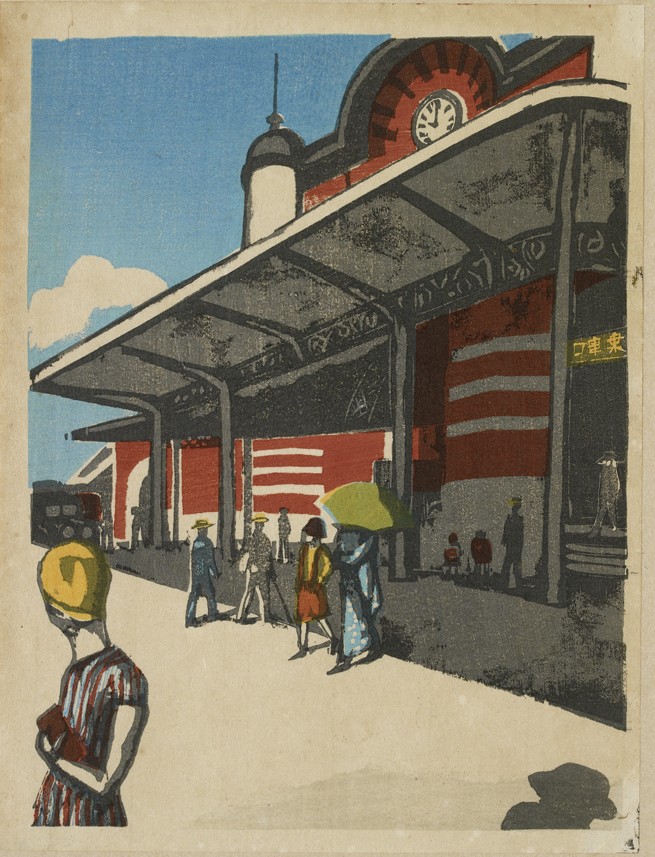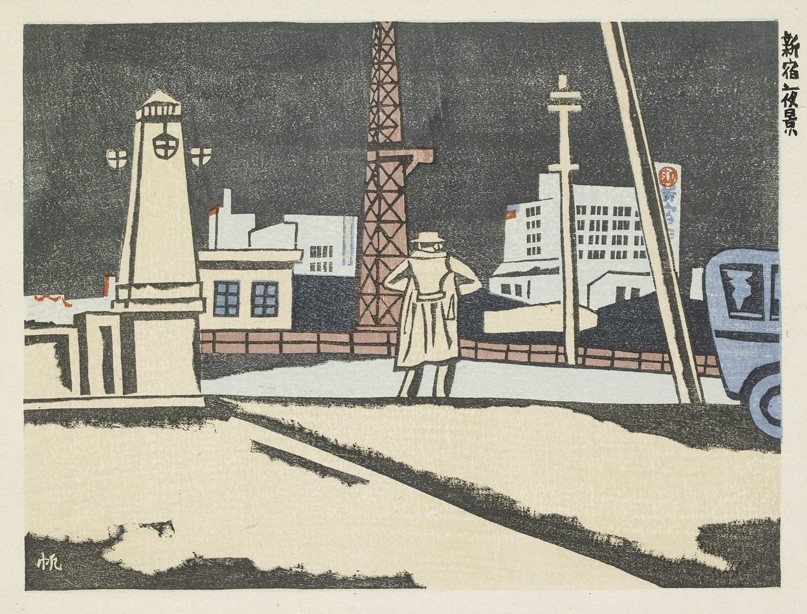Scenes of Last Tōkyō (Tokyo kaiko zue): Japanese Creative Prints from 1945
Gallery 29, until 5 June 2016

‘Tokyo Station’, Onchi Kōshirō (1891–1955), 1945
Presented by Christopher Dyment, EA2015.28 © Ashmolean Museum, University of Oxford
The spring 2016 exhibition in the Ashmolean’s Eastern Art Prints and Paintings gallery highlights a set of fifteen Japanese woodblock prints published in December 1945, just after the end of World War II. During the war, Tokyo suffered serious bomb damage and the series shows nostalgic views of famous places in Tokyo as they appeared before the wartime air raids. Half of the prints had already been published in the late 1920s, after the Great Kanto Earthquake devastated Tokyo in 1923, and were reworked for this series; the views depicted are therefore doubly nostalgic.
The prints were published with both Japanese and English titles in order to appeal not just to Japanese audiences but also to the Allied Occupation forces stationed in Japan at the time. It is thought that the title ‘Scenes of Last Tokyo’ may in fact have been a mistake for ‘Scenes of Lost Tokyo’. It is worth noting that the artists’ statement accompanying the portfolio, which contains a heartfelt expression of loss at the destruction of Tokyo and of nostalgia for Japan’s imperial past, appears only in Japanese.
The nine artists who collaborated on this portfolio all belonged to the Sōsaku Hanga (Creative Print) movement. This art movement emerged in the early 1900s, emphasizing the importance of individual artistic expression. Creative Print artists insisted on designing, cutting and printing their own work, unlike traditional Japanese ukiyo-e print designers, who worked with skilled block cutters and printers under the direction of commercial publishers. The main catalyst for the modernization of Japanese prints came from the West. Japanese artists were by now very well informed about international art movements, with many artists travelling abroad and numerous art magazines introducing works by Western printmakers such as William Nicholson, Félix Valloton and Edvard Munch. As a result, not all Creative Prints were particularly technically accomplished; far more important to their makers was the act of creating an original work of art.

EA2015.27 ‘Night of Shinjuku’, Maekawa Senpan (1888–1960), 1945
Presented by Christopher Dyment, EA2015.27 © Ashmolean Museum, University of Oxford
‘Scenes of Last Tokyo’ was presented to the Ashmolean Museum in 2015 by Christopher Dyment, a long-time collector of Sōsaku Hanga Creative Prints. The prints are complemented in the exhibition by a display of four artists’ books, selected from a set of nine volumes published between 1941 and 1943 to commemorate ten years of publishing by the art publishers Aoi Shobō. Entitled ‘Collection of Nine ‘Window of Writing’ Print Albums (Shosō hanga-chō jūren-shū), this set contains works by many of the leading Sōsaku Hanga artists of the day, including five of the artists who contributed to the ‘Scenes of Last Tokyo’ series. Each book contains ten works, accompanied the artist’s own text.
Clare Pollard, Curator of Japanese Art
Click HERE to purchase prints on demand from the Ashmolean shop.
